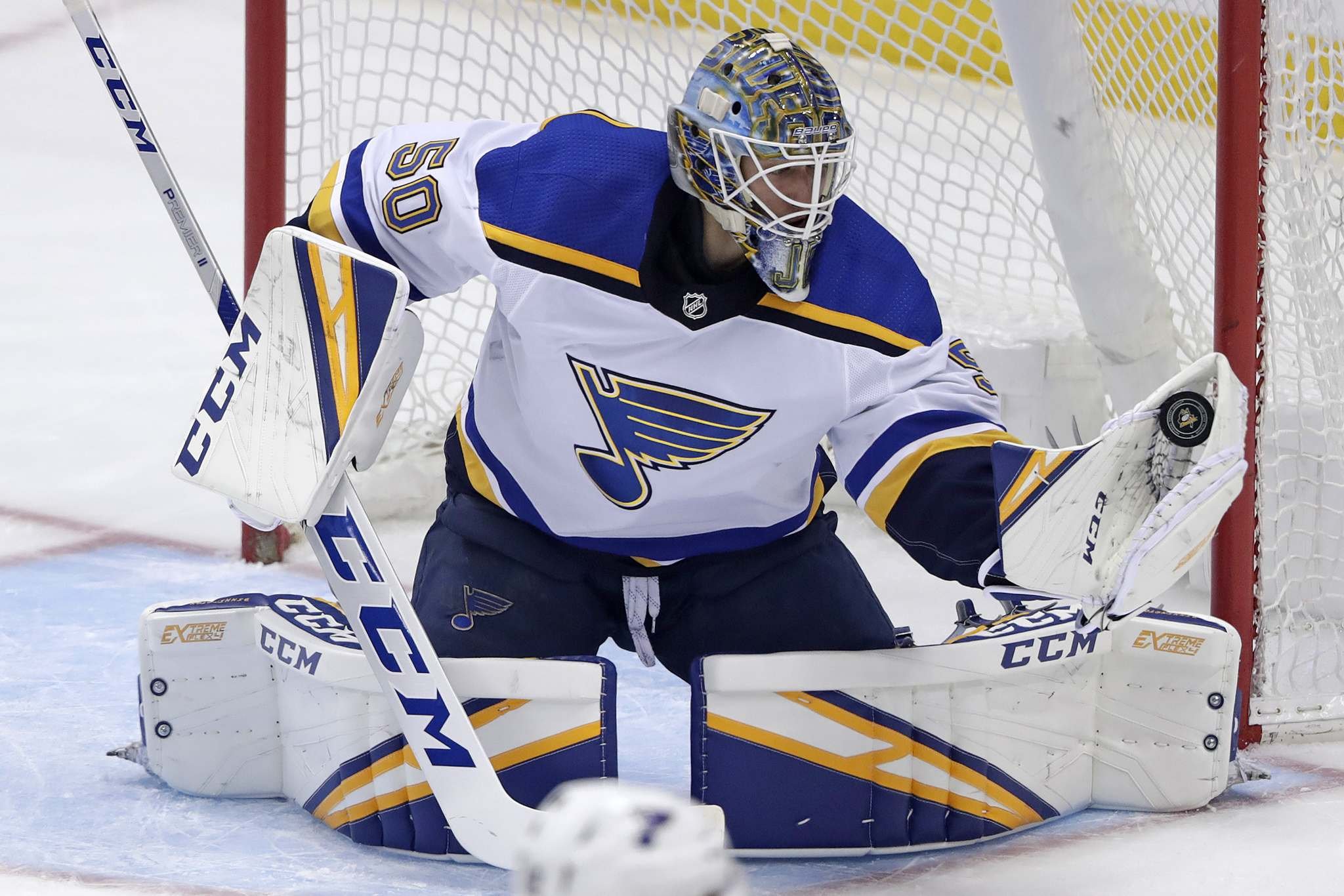October 11, 2023 | 10:35am ET
By Anthony Di Marco, TheFourthPeriod.com
A NEW ERA IN ST. LOUIS
Photo by Jeff Vinnick/NHLI via Getty Images
Blues GM Doug Armstrong
MONTREAL, QC — Going back the last 12 seasons, you would be hard pressed to find a more consistent NHL team than the St. Louis Blues. Since the 2011-12 campaign, the Blues have qualified for the playoffs in 10 out of 11 years, making out of the first-round in five of those seasons, having two Western Conference Finals appearances and a Stanley Cup Championship in 2018-19.
General Manager Doug Armstrong, who enters his 14th season at the helm, has overseen all this success, while quietly becoming regarded as one of the most respected executives in hockey.
The overall success has not come with adversity, mind you, as the Blues had to go through a major facelift a little less than a decade ago after they went “all in” at the 2014 NHL Trade Deadline. Moving on from franchise cornerstones David Backes and T.J. Oshie, among others, Armstrong and the Blues went through a major roster overhaul ahead of their 2019 Stanley Cup Championship.
Four years post their 2019 championship, the Blues have once again been faced with yet another transition period. But according to Armstrong, it’s something that was inevitable.
“Going into last season, this year was going to be a year of transition regardless,” said Armstrong in an exclusive interview with TFP this week. “We knew we had expiring contracts. We knew we had younger players, we knew that the 13 year era had played itself through and we were entering a new portion of our organization.
“We’d like to get our identity back; I’d like to find a strong identity for our franchise again.”
Since the 2020 off-season, the Blues have seen many integral parts of their Stanley Cup Championship team move on. Defenseman and former Captain Alex Pietrangelo left as a Free Agent to the Vegas Golden Knights three off seasons ago, while rearguard Joel Edmundson was moved in the summer of 2019 and forward Jaden Schwartz left in succeeding years via Free Agency in 2021.
Last season, then-Captain Ryan O’Reilly was traded to the Toronto Maple Leafs, while long-time Blue and franchise cornerstone Vladimir Tarasenko was dealt to the New York Rangers. The trades of arguably the two most important franchise forwards of the past decade felt like an official changing of the guard, leaving gaping holes up front in terms of who will lead this team offensively into the next era.
The departures of O’Reilly and Tarasenko directly impact the futures of Jordan Kyrou and Robert Thomas, who after getting handed big time contracts, are expected to be the driving forces of this team offensively for years to come.
“They (Kyrou & Thomas) are certainly the offensive focal point of our franchise now,” Armstrong said. “We rewarded them with contracts, and I believe they’ve earned those contracts. With that comes having your name circled by the other team, to eliminate your talents from the game.
“They have to get creative on how to have impacts on the game, because they’re going to be circled, checked and played against harder than ever before. I think they’re up to the challenge and all great players, at some point during their careers, enter that time of being a focal point, and those two guys are certainly that for us offensively.”
The changing of the guard is not only coming in the way of on ice production, but also in leadership. The team was in need of a new captain after the departure of O’Reilly last winter, and the Blues elected to go with Brayden Schenn as the next official leader into this new chapter.
Schenn, 32, is entering his seventh season as a Blue and has been an integral part of the team’s success since his arrival. Acquired from the Philadelphia Flyers at the 2017 NHL Draft, Schenn has proven to be a Swiss army knife that can play any forward position and bring all types of elements to the Blues’ forward group. He is committed to the franchise until 2028 – he signed an eight-year contract extension in 2019 – and seemingly checks all the boxes to help usher in a new era.
“When you’re going through what we’re going through, having somebody who has experienced a lot of things in their career (it’s valuable),” said Armstrong. “He was a top junior player, had been traded twice, has won a Stanley Cup, has been on a World Championship Gold Medal team, has played up and down the lineup – there’s not much that we can go through this year that he hasn’t seen and that’s important when you have that type of leader in your group.”
Armstrong also went out of his way to acknowledge the importance of the alternate captains, specifically Thomas, who is the face of the next generation of Blues. Being able to learn from the likes of Schenn, Justin Faulk and Colton Parayko, Armstrong believes Thomas will be ready when it’s “his turn.”
Despite the period of transition, the Blues are not intending to go through a full rebuild and want to get back to a competitive status. But even with that goal, they have been able to quietly go about their business in restocking the cupboard through maintaining and acquiring draft capital.
Since the 2020 NHL Draft, the Blues have drafted six times in the first round, which ranks right atop of the league; they selected three times in the first-round in 2023, as well.
“That’s why there’s hope that this thing can turn around quickly,” said Armstrong. “We understood this day was coming.
“We’ve been able to keep our first-round picks and add (additional picks).”
A major issue the Blues’ faced last year was team defense, and it was exposed all season long. The Blues did attempt to move out Torey Krug in exchange for Travis Sanheim, but it ultimately fell through with the former being unwilling to waive his No Trade Clause. With that, the Blues are bringing back predominantly the same group on the backend that had such a difficult time last season. But along with mentality, it’s a team effort that needs to be improved in the Blues’ own end.
“We lost our focus, we lost our focal point,” said Armstrong. “We just weren’t a cohesive organization last year, we were splintered. When you’re splintered, it shows up on the ice. But that ship has sailed now, we’re trying to regain our footing and I think Schenn, Thomas, Faulk and Parayko have done a great job of setting that standard.
“Our team defensive game wasn’t conducive to winning hockey.”
Five years ago, on route to the team’s Stanley Cup Championship, goaltender Jordan Binnington burst onto the scene and went from the fourth string to the starter that back stopped the Blues to the top of the mountain. While the net is still his to lose, Binnington’s play has slipped in recent years, and with a hungry, young backup now behind him in Joel Hofer, there will be more internal competition for starting minutes.
There is nothing wrong with internal competition and that is something Armstrong expects from his goalies this season.
“We think Hofer has done everything he can in the American league,” said Armstrong. “He went to the World Championships, was on a team that won, has also won a World Junior, he’s been a top goaltender in the American league. We have faith that he can come in here and push our team and be a great partner for Jordan.
“Any coach or GM will tell you that the best type of competition is internal competition. That pushes you everyday, to maintain your ice on any given night. We believe in Hofer, he wants more starts and Jordan wants to keep the starts that he has – that internal competition is going to drive them both.”
The NHL is entering the fourth (and hopefully) last year of the flat salary cap. It has proven to be a major hurdle for every team since 2020, especially those who have looked to remain competitive like the Blues.
Armstrong has truly been an anomaly when it comes to one aspect of the salary cap, as he has never exercised a buyout during his time as GM of the Blues. Not having to deal with dead money has certainly helped and is indicative of overall good cap management, something the Blues have always been cognizant of and have always prepared for.
“Coming off of our championship season, we had a lot of guys under contract through the end of 2023 and had signed some of the guys pre-pandemic (which helped us be prepared),” said Armstrong. “The flat cap is what it is. We’re going to see a bump in the next couple of years, hopefully.”
After a disappointing season last year, Armstrong has an internal barometer as to what will dictate this season being a success. With six pending UFAs, more changes next season are inevitable, but the magnitude of said changes will depend heavily on how this season plays out.
“Hope for the best and prepare for the worst,” as Armstrong said.
Aside from the Colorado Avalanche and Dallas Stars, the Central Division is wide open. The Blues fall in the same tier as the likes of the Winnipeg Jets, Nashville Predators and Minnesota Wild, who will all be vying for the third seed in Central Division and avoid the impending dog fight for the wildcard seeds with the deep Pacific Division.
Through strategic cap management and drafting, Armstrong and the Blues have been able to make a (mostly) smooth transition into the organization’s next era. What is left to prove now is how successful this new era of hockey will be, because as we’ve seen over the last four seasons, the Blues have no issue turning over a new page if recent success has been absent.
Time will tell if the group set to lead the Blues will bear fruit, but there is no doubt that this truly is the dawning of a new era in St. Louis.



